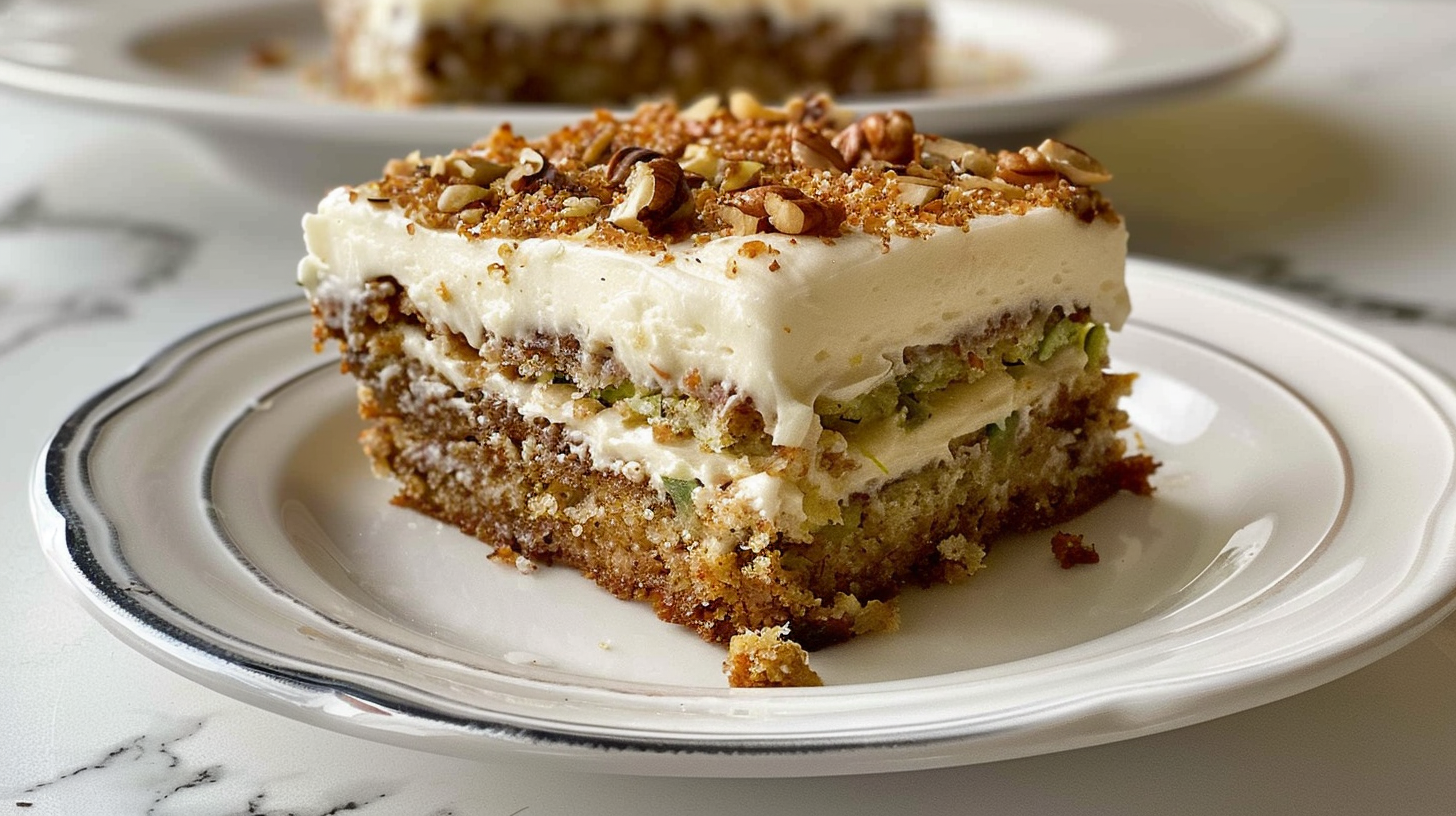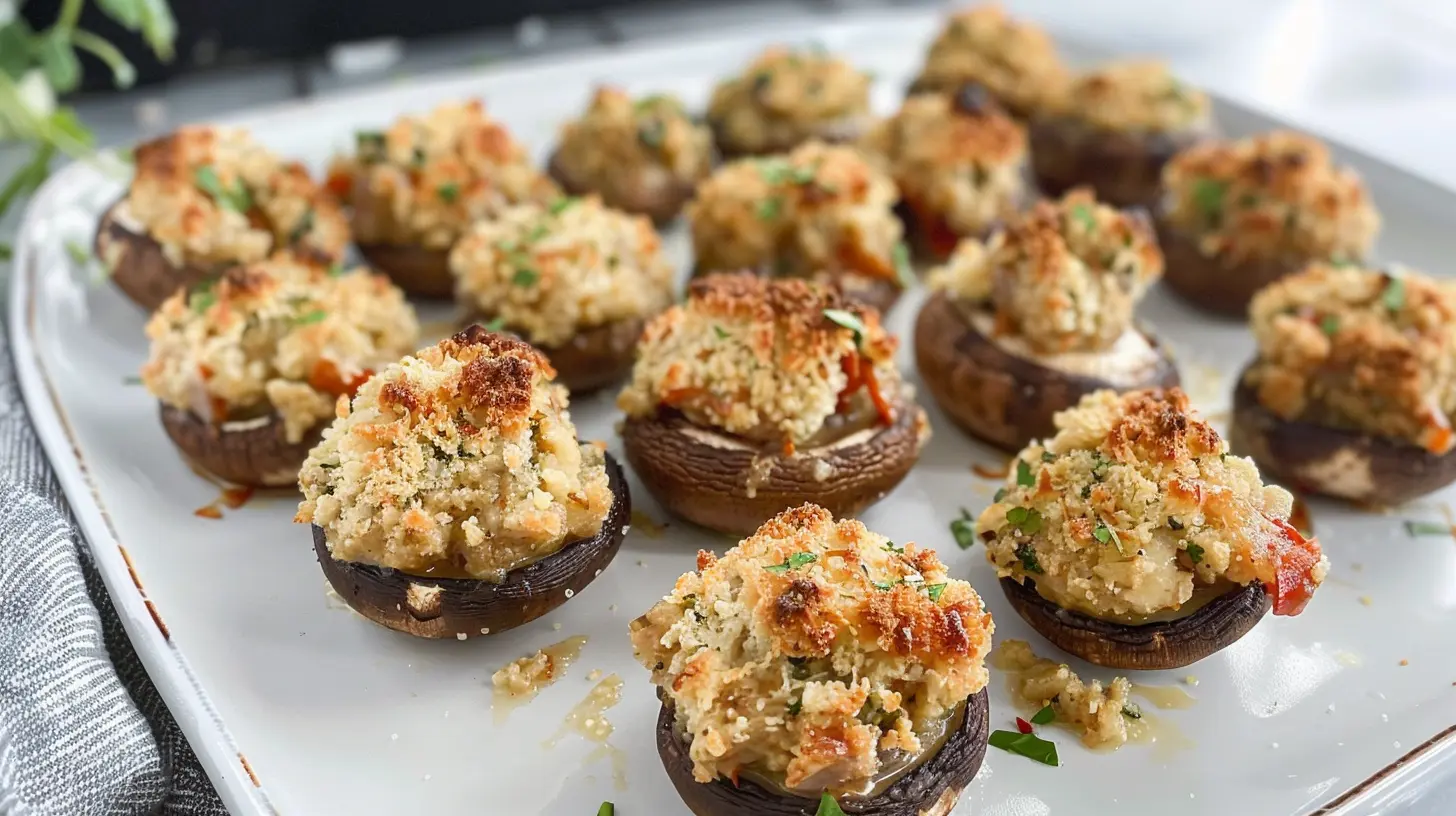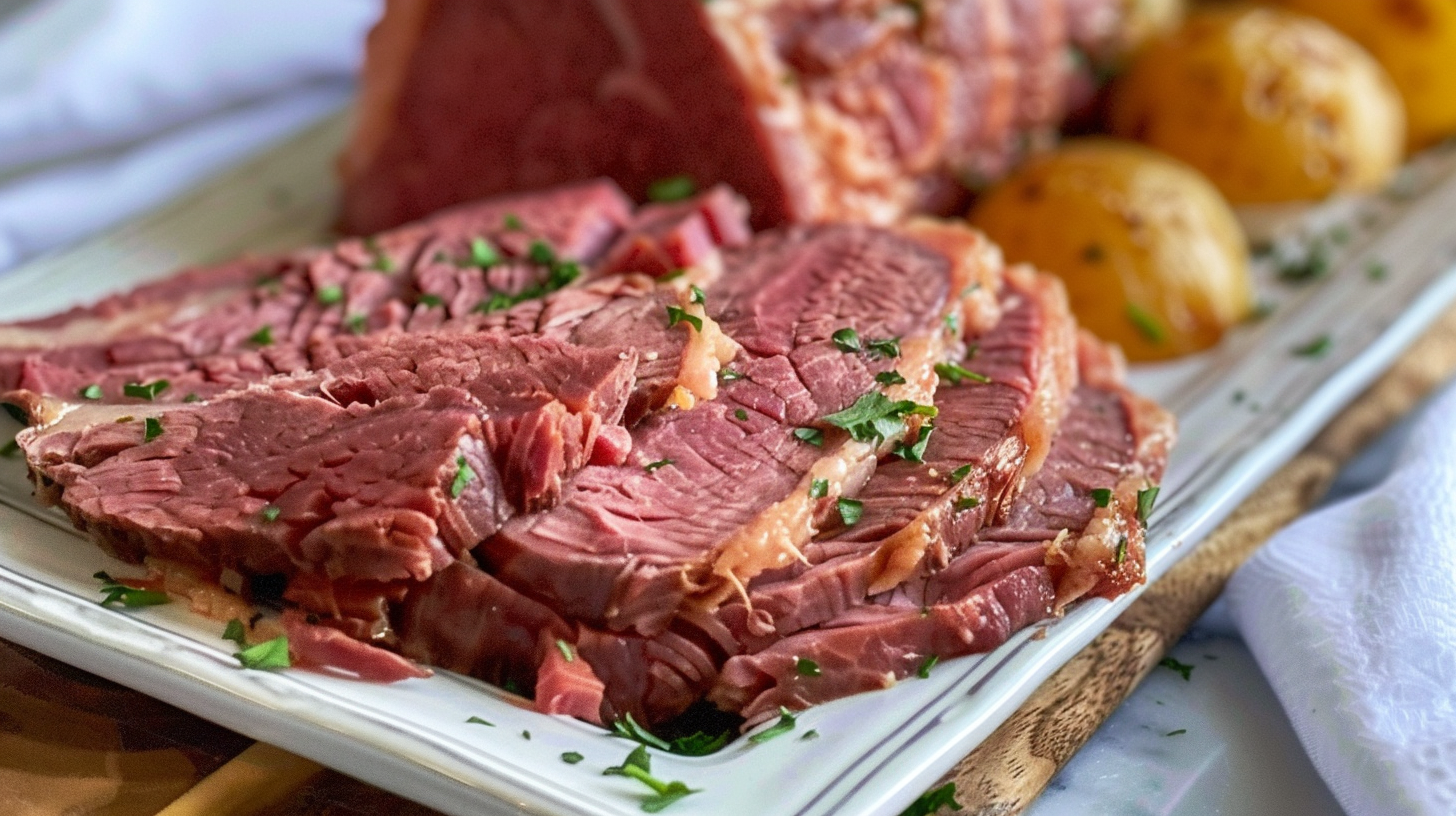Introduction to Ramen Noodle Salad
“Ramen Noodle Salad” introduces a vibrant and unconventional twist to traditional salad recipes by incorporating instant ramen noodles as a primary ingredient. This dish combines the crunchy texture of uncooked ramen noodles with a medley of fresh vegetables and a tangy dressing, making it a favorite for potlucks and picnics and a refreshing side dish. The salad often includes ingredients such as shredded cabbage, carrots, onions, and nuts, all tossed in a flavorful sauce typically made from soy sauce, vinegar, and sesame oil. This easy-to-make, budget-friendly salad can be customized with various additions like chicken, shrimp, or tofu, catering to multiple tastes and dietary preferences.
Fusion of Flavors in Ramen Noodle Salad
This recipe for the “Asian-inspired Ramen Noodle Salad” offers a delightful fusion of Eastern flavors with a Western twist, making it both intriguing and relevant. The salad incorporates the humble instant ramen noodle, a staple in global pantries, transformed into a dish that transcends its simple beginnings. This transformation is a testament to culinary creativity and highlights the adaptability of Asian cuisine within different cultural contexts.
Nutritional and Cultural Appeal of Ramen Noodle Salad
The appeal of this recipe lies in its combination of convenience and health. Using raw, uncooked ramen noodles adds a unique crunch that contrasts with the softness of fresh vegetables, such as cabbage, bell peppers, and green onions. A homemade dressing featuring soy sauce, sesame oil, and perhaps a touch of honey or ginger infuses the salad with bold, vibrant flavors typical of Asian cuisine.
Perfect for Every Occasion: Ramen Noodle Salad
This salad is particularly relevant during warmer months when light, refreshing dishes are favored. It is perfect for picnics, outdoor gatherings, or a quick and easy meal that does not require heating the kitchen. Moreover, it caters to various dietary preferences by allowing for adjustments, such as substituting traditional ingredients for gluten-free noodles or adding protein like chicken or tofu to appeal to a broader audience.
Ingredients for Asian-Inspired Ramen Noodle Salad
For the Asian-inspired Ramen Noodle Salad, you will need the following ingredients:
- Ramen Noodles – 1 package (discard the flavor packet)
- Cabbage – 2 cups, finely shredded (green, red, or a mix of both)
- Carrots – 1 cup, julienned or shredded
- Bell Peppers – 1 cup, thinly sliced (choose colorful varieties like red or yellow for visual appeal)
- Green Onions – ¼ cup, chopped
- Cilantro – ¼ cup, chopped (optional, for garnish)
- Almonds – ½ cup, sliced or slivered and toasted
- Sesame Seeds – 2 tablespoons, toasted.
For the Dressing:
- Soy Sauce – 3 tablespoons
- Sesame Oil – 2 tablespoons
- Vinegar – 2 tablespoons (rice vinegar preferred)
- Honey – 1 tablespoon
- Garlic – 1 clove, minced
- Ginger – 1 teaspoon, freshly grated
- Red Pepper Flakes – ¼ teaspoon (optional, for a spicy kick)
Important Notes for Ramen Noodle Salad Preparation
Organic Ingredients: For those who prefer to use organic products, it is advisable to opt for organic vegetables and, if available, organic versions of soy sauce and sesame oil to avoid pesticides and ensure a cleaner product.
Substitutions for Common Allergens in Ramen Noodle Salad
- Ramen Noodles: For a gluten-free option, substitute traditional ramen noodles with gluten-free ramen or rice noodles.
- Soy Sauce: Use tamari to avoid gluten or coconut aminos for a soy-free alternative.
- Nuts: If allergic to almonds, you can substitute with sunflower seeds or omit nuts entirely.
- Sesame Oil and Seeds: If sesame is a concern, consider using a neutral oil like avocado and omit the sesame seeds, though this slightly changes the flavor profile.
Step-by-Step Guide to Preparing Ramen Noodle Salad
Equipment Needed
- Large bowl for mixing
- Small bowl for mixing the sauce
- Whisk or fork
- Knife and cutting board
- Measuring cups and spoons
- Skillet or pan for toasting
Preparation and Cooking Steps
Prepare the Ingredients:
- Cabbage and Carrots: Shred the cabbage and julienne or shred the carrots. Could you place them in a large mixing bowl?
- Bell Peppers: Thinly slice the bell peppers and add to the mixing bowl.
- Green Onions and Cilantro: Chop the green onions and cilantro, then set aside for later.
Toast the Noodles and Nuts:
- Noodles: Break the ramen noodles into small pieces while still uncooked. Heat a skillet over mediume heat and lightly toast the ramen pieces until they turn golden brown, about 3-5 minutes. Stir frequently to avoid burning. Remove from heat and let cool.
- Almonds: In the same skillet, toast the sliced or slivered almonds until golden and fragrant, about 2-3 minutes. Watch closely, as they can burn quickly.
Make the Dressing:
- In a small mixings bowl or jar, combine the soy sauce, sesame oil, vinegar, honey, minced garlic, grated ginger, and optional red pepper flake. Whisk or shake vigorously until welle combined and the honey is dissolved.
Combine the Salad:
- Add the toasted ramen noodles, almonds, and sesame seeds to the large mixing bowl with the vegetables. Drizzle the dressing over the salad and tosse everything together until well-coated.
Garnish and Serve:
- Sprinkle with cilantro and chopped green onions as a garnish. Serve the salad immediately for the best texture, or let it sit for 10 minutes to allow the flavor to meld and the noodles to soften slightly.
Additional Tips for Ramen Noodle Salad
- Serving: It is best to serve the salad fresh, but you can also refrigerate it for a few hours; note that the noodles will soften as they absorb the dressing.
- Variations: To make it a heartier meal, add other ingredients like shredded chicken, shrimp, or edamame.
Dietary Variations for Ramen Noodle Salad
Gluten-Free
- To make this salad gluten-free, use gluten-free ramen noodles or substitute them with rice noodles or quinoa—also, substitute soy sauce with tamari.
Vegan
- Ensure that the noodles and other ingredients are vegan (some ramen noodles contain animal products). Instead of honey in the sauce, use agave syrup or maple syrup.
Nut-Free
- Replace the almonds with seeds like sunflower or pumpkin seeds to provide crunch without the allergens.
Soy-Free
- Instead of soy sauce, use coconut aminos to avoid soy while still getting a similar umami flavor.
Flavor Variations for Ramen Noodle Salad
Protein Additions
- To make the salad a more filling meal, add cooked chicken, shrimp, or tofu. For extra flavor, marinate these in a small quantity of the dressing before adding them.
Spicy Version
- To add a spicier flavor to the salad, increase the number of red pepper flakes and chopped fresh chili peppers, or add a little hot sauce to the dressing.
Different Vegetables
- Feel free to include other vegetables, such as sliced cucumber, snap peas, or edamame. These add not only different textures but also various nutrients.
Seasonal Variations of Ramen Noodle Salad
Summer Version
Incorporate more cooling vegetables, like cucumber or mango, for a sweet touch that pairs well with the tangy dressing.
Winter Version
Add heartier vegetables such as roasted sweet potatoes or Brussels sprouts to adapt the salad to colder weather. These variations ensure that the salad can be enjoyed in many ways, catering to various dietary needs and taste preferences, making it a versatile dish suitable for many occasions.
Nutritional Breakdown of Ramen Noodle Salad
To provide a nutritional breakdown and highlight dietary benefits or considerations for the Asian-inspired Ramen Noodle Salad, let us look at the typical components and their contributions:
- Calories: 300-350 kcal
- Protein: 8-10 grams
- Total Fat: 18-22 grams (with saturated fat kept relatively low, about 2-3 grams)
- Carbohydrates: 30-35 grams
- Fiber: 4-5 grams
- Sugars: 5-6 grams (primarily from the honey in the dressing and natural sugars in the vegetables)
- Sodium: High (can be moderated by using low-sodium soy sauce or tamari and adjusting the added salt)
Dietary Benefits of Ramen Noodle Salad
- High in Vitamins and Minerals: Various vegetables, such as cabbage, carrots, and bell peppers, are excellent sources of vitamins A and C.
- Good Source of Fiber: Including raw vegetables and almonds adds a good amount of dietary fiber, which is beneficial for digestive health.
- Antioxidant Properties: Ingredients such as garlic, ginger, and colorful vegetables contribute antioxidants that help reduce oxidative stress in the body.
Dietary Considerations for Ramen Noodle Salad
- Sodium Content: This dish can be high in sodium due to the soy sauce. Using low-sodium soy sauce or substituting some soy sauce with a splash of water or extra vinegar can help reduce the sodium content.
For persons with celiace disease or gluten sensitivity, it is crucial to verify that all components are gluten-free (particularly ramen noodles and soy sauce).
- Nut Allergies: Including almonds can be a concern for those with nut allergies, so substituting or omitting nuts is necessary.
- Sugars: While the dressing is not high in sugar, the honey adds a small amount. For a lower-sugar option, the honey can be reduced or substituted with a sugar-free sweetener.
This Ramen Noodle Salad is a nutritious option that balances vegetables and flavors. Appropriate substitutions and adjustments allow it to be adapted to fit various dietary needs, making it a versatile and health-conscious choice for a meal or side dish.
Pairing Suggestions for Ramen Noodle Salad
To complement the Asian-inspired Ramen Noodle Salad, pair it with other dishes and non-alcoholic drinks that enhance the flavors and create a balanced meal. Here are some recommendations:
Complementary Dishes
- Spring Rolls: Soft spring rolls stuffed with shrimp, lettuce, and herbs are wrapped in rice paper. They serve as a light and refreshing side that complements the crunchy texture of the salad.
- Grilled Chicken or Tofu Skewers: Marinate chicken or tofu in a mix of soy sauce, lime juice, and a touch of honey, then grill. These skewers add a protein-rich component that pairs nicely with the salad’s tangy flavor.
- Steamed Edamame: These young, lightly salted soybeans in the pod are simple to prepare and make for a healthy, fiber-rich snack or side dish that matches the Asian theme of the meal.
- Miso Soup: Serve a warm, soothing bowl of miso soup as a starter. Its umami-rich flavor provides a nice balance to the crisp and zesty salad.
Non-Alcoholic Drinks
- Iced Green Tea: Refreshing and lightly caffeinated, iced green tea complements the salad with its clean taste and can be sweetened with honey to echo the flavors in the dressing.
- Lemongrass Ginger Ale: Homemade or store-bought, this beverage offers a zesty and refreshing taste that pairs wonderfully with the gingery notes of the salad dressing.
- Cucumber Mint Water: This infused water is incredibly refreshing and easy to prepare, making it a perfect hydrating drink that cleanses the palate.
- Lychee Coconut Water: For a sweeter drink, mix coconut water with lychee juice (and perhaps a splash of lime) for a tropical-flavored beverage that complements the salad’s Asian flavors.
These pairings combine different textures and flavors ranging from sweet and umami to fresh and tangy, rounding out your meal with various options that cater to different tastes.
Share Your Experience with Ramen Noodle Salad
- What is Your Twist? Have you tried making this Ramen Noodle Salad with your unique twist? What ingredients did you add or substitute?
- Protein Preferences? If you added protein to this salad, which type did you choose? How did it change the flavor and texture of the dish?
- Dressing Variations? Dressing can break up or make a salad. Do you have a special dressing recipe that would go well with this salad? Please share your concoctions!
- Gluten-Free and Allergy-Friendly Options? For those who adapted this recipe to be gluten-free or allergy-friendly, what substitutions did you make? How did it turn out?
- Pairing Recommendations? What dishes or drinks did you pair with this salad? Do you have any recommendations for the perfect complementary meal or drink?
- Occasion-Specific Serving? Did you serve this salad at a special event or gathering? How did it fit into your menu, and what was your guests’ response?
- Culinary Tips? Do you have any culinary tips for prepping the vegetables or toasting the noodles that might help other readers?
Frequently Asked Questions (FAQs) about Ramen Noodle Salad
Can I make this salad ahead of time?
- Answer: Yes, you can prepare the salad in advance, but for the best texture, add the dressing and the toasted ramen noodles just before serving to keep them crunchy.
What are some protein options I can add to this salad?
- Answer: Chicken, shrimp, or tofu make excellent protein additions to this salad. You can grill or pan-fry these proteins before adding them to the salad.
Is there a way to make this salad lower in sodium?
- Answer: To reduce sodium, use low-sodium soy sauce or substitute some soy sauce with water or additional vinegar. You can also limit the added salt.
How can I make this dish gluten-free?
- Answer:To make this salad gluten-free, substitute the ramen noodles with gluten-free or rice noodles and use gluten-free tamari instead of regular soy sauce.
What are some vegan alternatives for the dressing?
- Answer:For a vegan dressing, replace the honey with maple syrup or agave nectar. Ensure that the remainder of the components, including the ramen noodles, are vegan.
Can other types of seeds and nuts be used?
- Answer:For a nut-free option, you can substitute almonds with other nuts like cashews or peanuts or use sunflower or pumpkin seeds.
What is the best way to toast the ramen noodles and nuts?
- Answer: The best method is to toast the ramen noodles and nuts in a dry skillet over medium heat until golden brown. Keep an eye on them, as they can quickly burn.
Are there alternative vegetables that work well in this salad?
- Answer:Yes, you can use different textures and flavors by adding vegetables such as snap peas, radishes, cucumbers, or edamame.
How long does this salad keep in the refrigerator?
- Answer: This salad is best served fresh but may be refrigerated for up to 2 days. The noodles will soften the longer they sit in the dressing.
Can I make this salad spicy?
- Answer: To give the salad a spicy bite, increase the quantity of red pepper flakes in the dressing or add a dab of sriracha or another hot sauce to taste.








